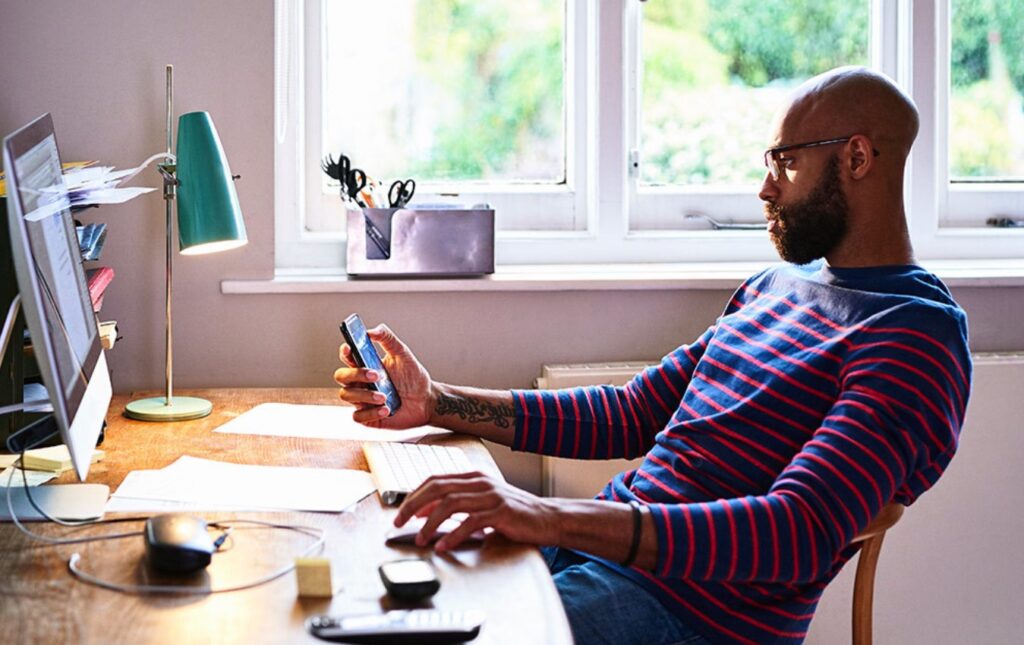According to a survey by Harrispoll, 51% of employed individuals in the United States are currently working from home because of social distancing. In another independent data collected by the UK’s Office for National Statistics, 49.2% of working individuals in the United Kingdom are also working from home following the pandemic. With these figures staring us in the face, remote work is starting to look like the “new normal”. It’s becoming evident that more people can work from home than employers cared to admit in the past.

Is Remote Work Efficient?
More and more people are beginning to ask, “Does remote work actually work?” To answer this question, we need to look at remote work trends for 2024. More than a decade before the COVID-19 pandemic, workers and employers were already talking about the possibilities of remote work. People who dared to dream talked about the impact of technology on work and the office. A few years ago, according to a survey by the World Economic Forum, only 7% of workers in the United States had the pleasure of working regularly outside the office. The technology for working at home was in its infancy.
However, this is 2024—the year that came with a bang! It has seen more people working from home than the world could have anticipated in such a short period. It brought with it a dramatic change that saw countries, companies, and employees shifting massively to work from home. While this swift transition was because of the pandemic, we can’t deny that it brought a welcome change to many. According to Flexjobs, 65% of individuals admit that they became more productive when they began working from home. Virtual meetings have become common and we’re starting to see other informal sides of our co-workers’ lives that we never saw at the office.

Is this the Future of Work?
This new trend that has seen more employees working from home has pushed a lot of people to ask if this will be the future of work. Do we really have what it takes to sustain remote work beyond 2024? The answer to this question depends on whom you ask. While some employers still insist that they’ll like their workers to resume commuting to the office eventually, companies like Twitter are already charging full force towards embracing a remote working team. According to the CEO, Jack Dorsey, employees can work from home “forever” if they choose to! Google, while not saying they’ll allow workers to work from home permanently, has announced that employees can continue working from home until at least 2024.
This at least shows a willingness by employers to consider the possibility of mixing commuting and telecommuting. It takes courage to thread a new road, and sometimes, that’s all that is needed to succeed. According to an estimation by the ILO, 27% of workers in high-income companies can work from home. However, this does not imply that they can continue working from home permanently. The real question is whether we can use the technological tools at our disposal to find ways to tap into the numerous advantages of working remotely, without losing the social benefits of human interaction that we get from the office. Lack of human interaction can lead to problems with mental health, and these need to be addressed.

What Needs to Happen Next
While we celebrate the technological innovations that allow us to work from home, we have to keep in mind that not all jobs can be done remotely. Moreover, not all employees want to keep this setup permanently. Companies need to find ways to make the workplace safe for these people by providing frequent monitoring and testing services, maintaining social distance policies, and providing workers with personal protective equipment. Workers who choose to go to the workplace or whose job requires their physical presence need to know that they’re not risking their lives when coming in for work. Flexibility needs to be balanced with safety.
Considering that companies have been able to keep economic collapse at bay through remote working teams, it shows we possess the capabilities to turn this into a new way of life. Remote work provides employees with opportunities to spend more time with their loved ones and take better care of their health. This has given work a human-centered approach. Finally, after a long while, we are beginning to balance work with our personal lives, giving access to better child and eldercare. Employees who work from home have reported that they fall sick less often than their counterparts who still commute to the office.
However, it’s not all roses and honey. Some individuals are beginning to find it difficult to draw a line between work and personal life. Spending every day at home has made it difficult for them to differentiate between work and family time. This exposes these employees to higher levels of stress. According to the United Nations policy brief on the effects of COVID19, these individuals face a higher risk of developing mental health problems if care is not taken.

According to Traqq, a time tracking company, “project management tools, collaboration tools, and time management software, are technologies that can help to create a balance between remote work and commuting to the office”. The tools to sustain work beyond 2024 are already available. By allowing for shorter work weeks, and giving workers the choice to telecommute when they want to, it’s possible to make working from home a new way of life. This hybrid way of work can be the answer to the dilemma of how to create a balance between our personal lives and the demands that come with making a living.
Telecommuting can mean going to the office twice or thrice a week and then working from home for the remaining days. We don’t have to sacrifice one for the other. We can enjoy the psychological benefits of working in an office, and the health and financial benefits of working remotely. The tools to achieve this are here and we should grab it with both hands.





